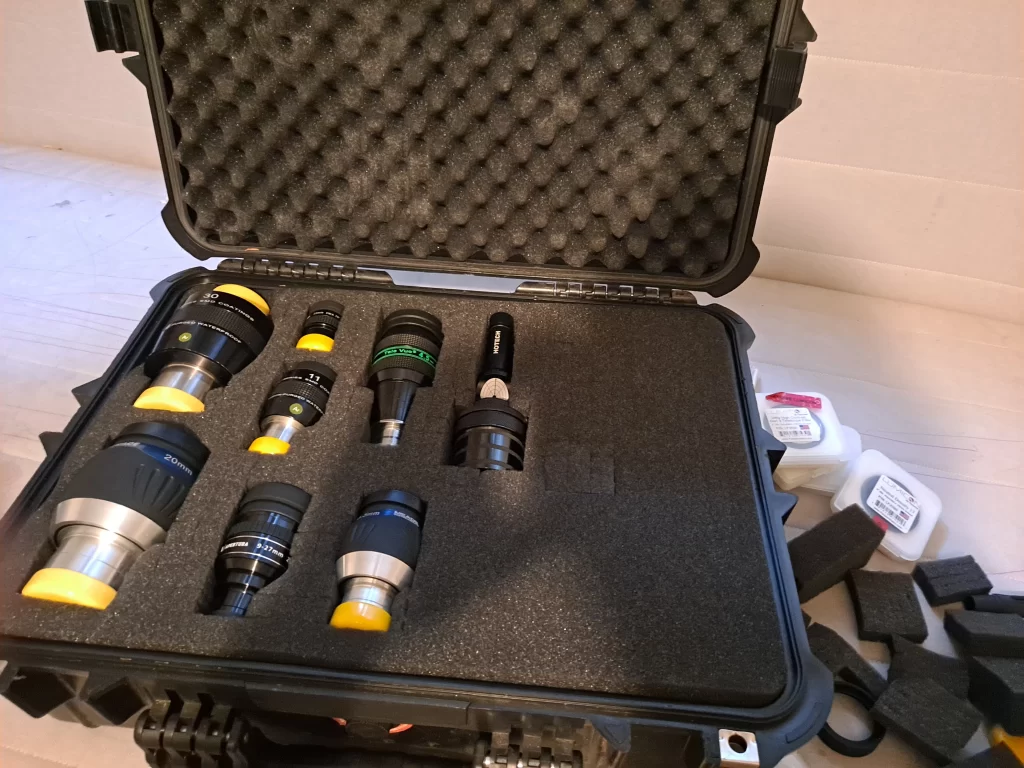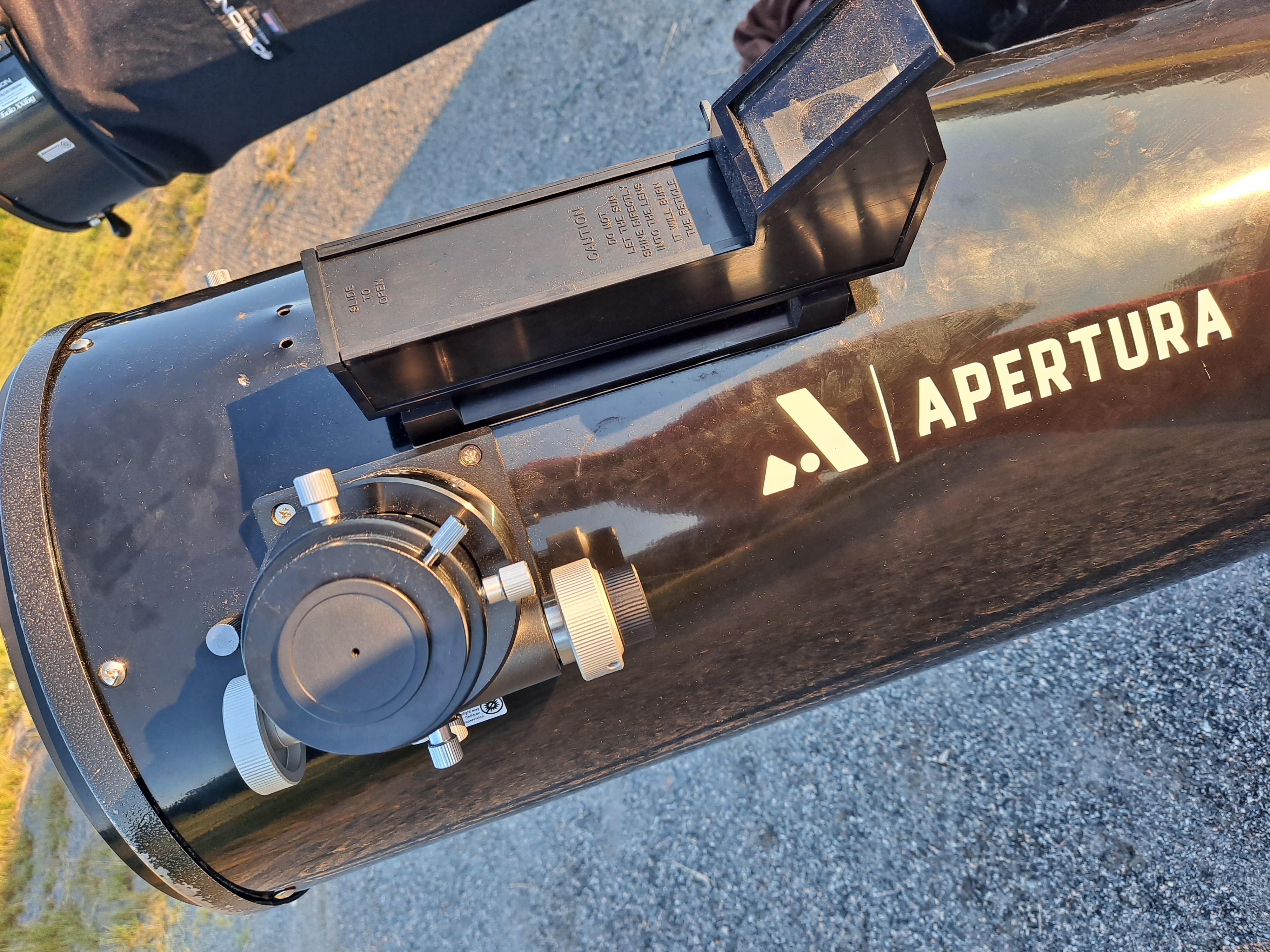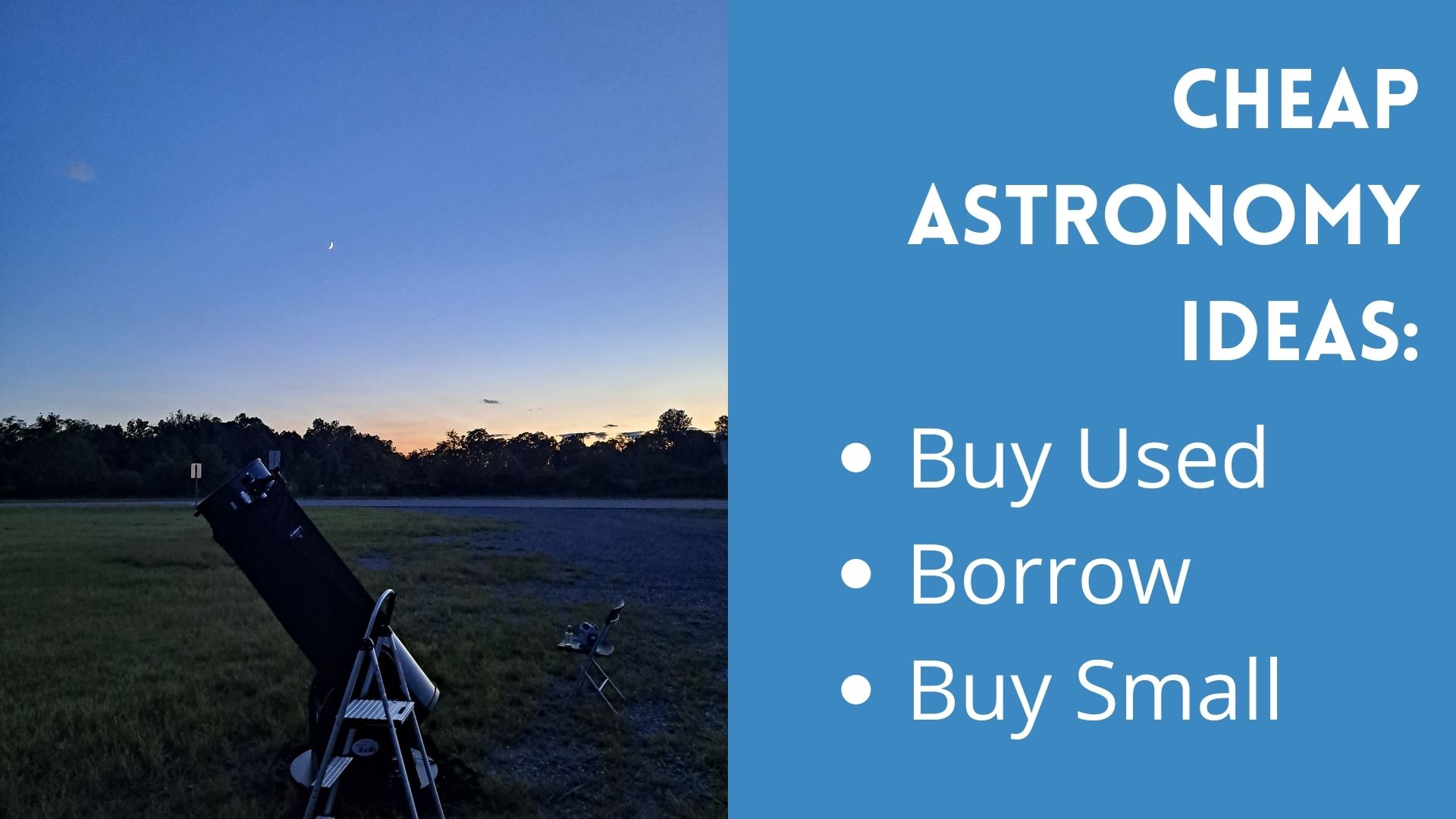Eyepieces are expensive and they should be stored away from dust and moisture. While there are plenty of eyepiece cases available from manufacturers, there are a few easy ways to make one at home.
When considering how to store your eyepieces you have a lot of options and all it needs to do is keep the eyepieces safe and dry. The case should be easy to carry if you travel frequently and it should fit all your eyepieces. You may choose to store your cameras and dew heaters in the same case or a second case.
No matter what you choose, these are the most popular options and the ones I have used.
Hard Case with Pluck Foam

There are two hard cases available that you can use for your DIY eyepiece case: Pelican or Apache.
Pelican cases are more expensive, but they are said to be dust and moisture proof, they will impress your Facebook friends.
I have a black Apache 4800 case that I bought at Harbor Freight. It was less than $100 and it came with pluck foam.
Start by laying out your eyepieces on top of the foam until you are happy with the layout. You can put in your eyepieces vertically or horizontally. Just be sure you can read all the necessary information.
Make sure to leave a space for your filters and collimator.
I like a separate case for my photography supplies so I can travel lighter when I am going out for visual observing.
When you are happy with the layout of your case, start removing blocks of foam. I just used my fingers to pluck out a space to fit my eyepieces, but you can use a knife if you prefer.
Do one eyepiece at a time and check the fit before moving on to the next one.
If you remove too much foam, you can glue pieces back in.
The spaces do not need to fit the curves of the eyepiece, they just need to fit snugly so they do not move around when being transported.
When you have removed enough foam to be happy with the case, you can spray black Plastidip on the foam to keep it from falling apart. The Plastidip makes it look brand new and custom designed, and makes it a bit more durable.
This case is sprayed with black Plastidip:

You can see that the lines in the pluck foam have disappeared.
The pluck foam does make a bit of dust and will break down over time. If you are hoping to avoid this you could use custom dividers.
Hard Case with Padded Divider
Custom padded dividers are what you see in photography bags. We are using similar optics and these custom dividers work well.
This divider is the one for the Apache 4800. It is more of a plug and play option that requires no customization. It is a great solution with less foam to break down in the case.
The dividers are movable so that you can customize it to fit your collection.
Here is an example a friend shared with me online.

This is working well for him and it is a neat and tidy option.
Storing the lenses vertically like this also makes more space in the case for your growing eyepiece collection.
If these cases give you the itch to grow your collection check out what other people say about the perfect sized eyepiece collection.
Wooden Case with Cutouts
For a truly DIY option you can build your own wooden box to transport your eyepieces.
The Apache has interior dimensions of 17 ⅞” x 12 ⅞” x 6 ⅛” and that seems to be a good size for a wooden box as well.
You could simply order the pluck foam, rigid foam or the custom dividers to fit in your wooden box.
I could not write this post without linking to this gorgeously crafted DIY wooden eyepiece case.
How to Store Eyepieces
Eyepieces should be stored away from dust and moisture. If you do not have an eyepiece case yet, find a nice secure place to store the eyepieces and keep them in a climate controlled area.
If you absolutely cannot store your eyepieces inside, you can keep them in your car. We called Orion to ask about the temperature fluctuations and they assured us that the temperature was not an issue as long as you could keep them dry and free from dust and dirt.
This eyepiece storage guide will help you find the perfect storage solution for you and your eyepiece collection.
Other DIY Eyepiece Options
I have seen some really creative cases around the internet as well:
- Wrapping the eyepieces well in plastic and spraying them with spray foam to create a custom case insert.
- Small fishing tackle box
- Camera Bag
- Rifle Case for larger eyepiece collections
- Briefcase with foam
- Waist pack
- Lunch box
How do I carry dew heaters and other accessories?
Eyepieces are just part of the set up. You will also need to carry your observing chair, dew heaters, camera, power bank, and anything unique to your setup.
I have quite a few bags that I carry and it gets pretty sloppy.
I like to keep each component packed together.
Keep dew heater equipment in a small zippered bag so that all the cords are contained. I carry my headlamp in this bag as well.
A gym bag is a great solution for carrying the various accessories while keeping them in their own place.
Depending on your vehicle it may be easier to use plastic storage tubs to transport your equipment. I transport my large telescope in a Honda Civic, so I need soft sided storage.
This video walks you through packing up everything for a trip.
Not everyone travels with their telescope, if you are observing at home, just be sure to keep the dust off of all your components.
This guide to storing your telescope will give you a few more hints.






